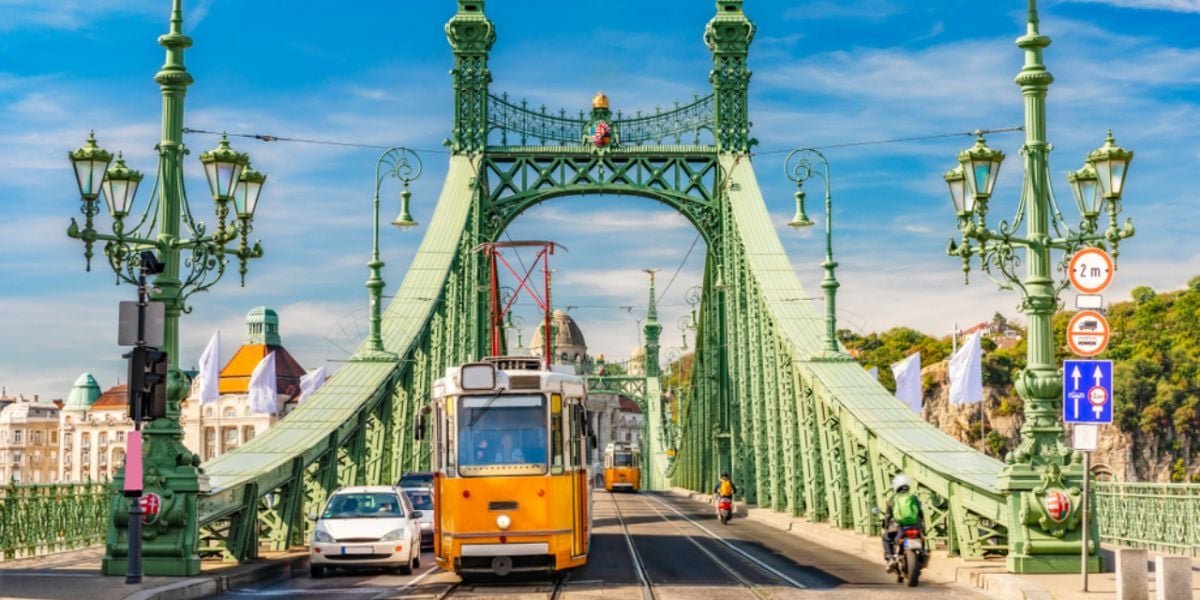
The transportation network in Budapest is quite extensive and organised, even though errors can happen here as anywhere else, for example, broken-down buses, late arrivals due to traffic jams or missing services. So it is worth to add some extra time on top of your standard journey time to be sure you get everywhere in time.
Public transit in Budapest
Subway
The fastest and easiest way of public transport in Budapest is using the underground with the four existing lines, also known by their colours:
- M1 or the Yellow Line: between Vörösmarty tér and Mexikói út (continental Europe's oldest underground railroad, built in 1896)
- M2 or the Red Line: between Déli pályaudvar and Örs vezér tere
- M3 or the Blue Line: between Újpest Központ and Kőbánya-Kispest
- M4 or the Green Line: between Kelenföld and Keleti pályaudvar
These metro lines are generally reliable and can take more people than buses or trams. You can only experience littles issues when they are being renovated. In these times, buses are replacing them on the renovated parts of the line, but on normal parts, you can still use normal subway cars.
Buses
As Budapest only has four subway lines, you probably have to take another form of public transport as well when travelling to work, school or for a meeting. You are most likely to find a bus stop close to your home, as Budapest has more than 200 bus routes covering most inner-city and suburban areas. Some routes offer an express service, indicated with an “E” following the bus number. Most of the buses are newer types, with a low floor and bigger inner spaces to make them more accessible for people with wheelchairs and mothers with prams.
You can read about accessible services on the page on the Centre for Budapest Transport website.
Trams
Trams are also widespread in the city; you can find really old ones in Buda side, while the most famous ones are Line 4 and 6, which are served by modern Combino cars, travelling along Nagykorut (Great Boulevard) in the middle of Pest. Red trolleys are a mixture of trams and buses, as they are using overhead wires but not stuck to tramlines.
There are 15 lines of them, starting from number 70 up to 83. The reason for this numbering is coming from communism, as the first trolleybus line was opened in 1949 when Stalin celebrated his 70th birthday.
Suburban rails
If you live in an outer district or in the suburban area, you can use the green suburban rails, called HEV, which are a fast and comfortable way of travelling. You can carry bikes on most of them, so they are preferred options if you are planning some cycling in the hills or green areas at the weekends. If you are travelling with these lines, remember to buy extra tickets if you are travelling outside of the city's border.
For other normal journeys, you can buy single tickets, a block of 10 tickets, or weekly/monthly passes. You can get them from ticket offices located at bigger underground and bus stations or recently from ticket machines as well. Find out more about ticket prices here.
Other means of transportation in Budapest
There are some unique means of public transport in Budapest, like the Funicular, which takes you up to Castle Hill from Clark Adam Square, the Chairlift, or boat lines, which all have special ticket prices. These ways of travel are used mostly by tourists or families at the weekends.
And lastly, if you prefer to go by bike, you can use the cycle sharing network of MOL Bubi bikes, which can be hired and returned to any of the 98 docks across the city.
We do our best to provide accurate and up to date information. However, if you have noticed any inaccuracies in this article, please let us know in the comments section below.








